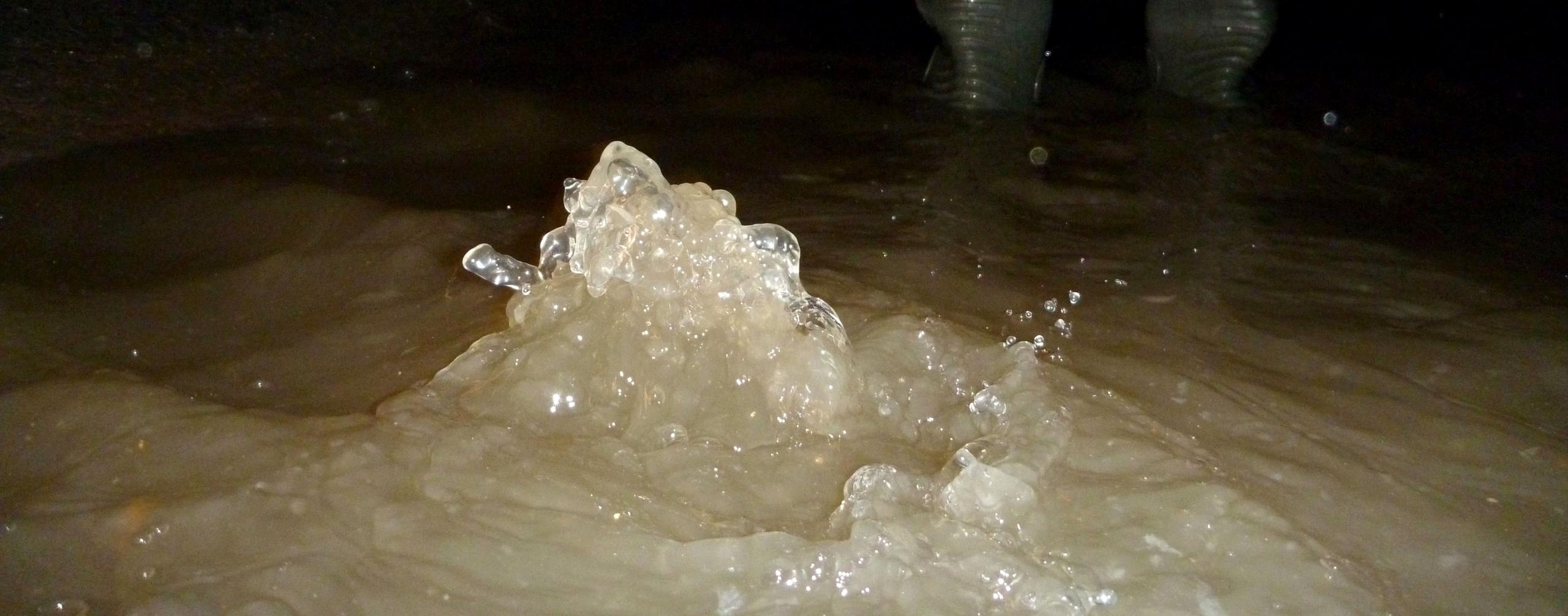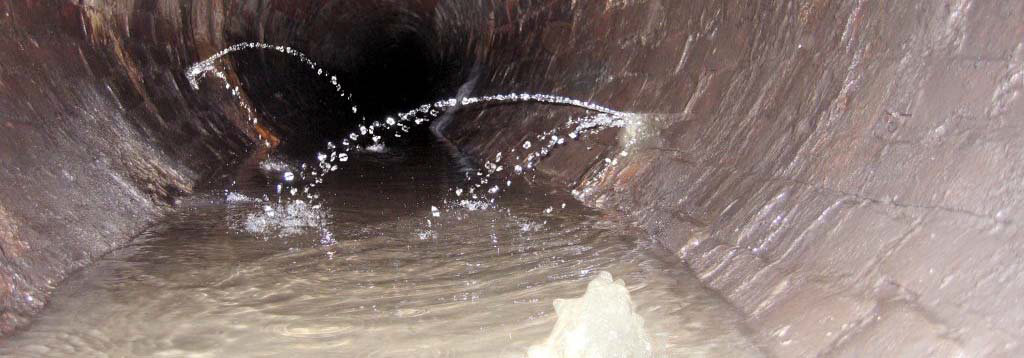
Extraneously infiltrated water in drain and sewer systems as well as treatment plants costs money, a lot of money. Stein Ingenieure helps you save these costs and run your municipal sewage disposal system more efficiently.
A methodology developed by us, and called LEAN-extraneous water infiltration management, meets all requirements towards a modern extraneous water infiltration management. It is based on a detailed mathematical analysis of data series and all other gathered information. The result is a time series hydrographic analysis with feature detection.

Using the time series hydrographic analysis, the day-to-day values for extraneous water infiltration and surface water are precisely indicated, and the volume of extraneously infiltrated water is exactly determined. LEAN-extraneous water infiltration management can be used independent of precipitation events, because these form part of the calculations.
- Services:
- Analysis of the network structure and existing discharge measurements
- Planning and implementation of discharge measurements
- Monitoring and evaluation of discharge measurements
- Concept for the sustainable reduction of extraneous water infiltration
- LEAN external water infiltration management
What benefits does “Lean“– extraneous water infiltration management offer?
- One single representative and short measurement campaign compared to other methods
- Exact determination of the extraneous water infiltration hydrograph without gaps on dry weather days
- Quantification according to the “user pays” principle and allocation of the quantity of extraneous infiltration water to catchment sub-basins
- Elimination of the extraneous water infiltration sources choosing the best cost-benefit ratio.
For this reason, the management of extraneous water infiltration includes:
- Planning and coordination of comprehensive campaigns to measure volumes of extraneously infiltrated water in order to develop a priority list for the catchment areas regarding the load of extraneous infiltration water in the total network
- Analysis and evaluation of measured data from pumping stations, storm water basins and wastewater treatment plants in order to determine the volume of extraneous infiltrated water and cost saving potential
- Development of concepts to measure extraneously infiltrated water volumes, so the source of the extraneously infiltrated water can be determined based on continuous flow measurements
- Development of rehabilitation strategies and predictions in order to determine the future investment costs by considering the structural condition of the drain and sewer system
- Planning and implementation of measures for reducing extraneous infiltration of water by taking into account private drainage pipelines
- Professional support in the implementation of projects from a political point of view.
Steps towards a comprehensive extraneous water infiltration rehabilitation concept (diagram)
- Constant flow measurements at a few selected points
- Determination of the extraneous infiltration water volumes via time-series analysis
- Creation of a time series hydrographic analysis based on the data captured in the flow measurements
- Calculation of the periodic percentages of water consumption and the rainwater runoff
- Determination of the exact day-to-day extraneous infiltration water volumes and percentages
- Analysis of the extraneous infiltration water sources via feature detection
- Development of rehabilitation strategies and predictions considering the structural condition of a sewer network.
